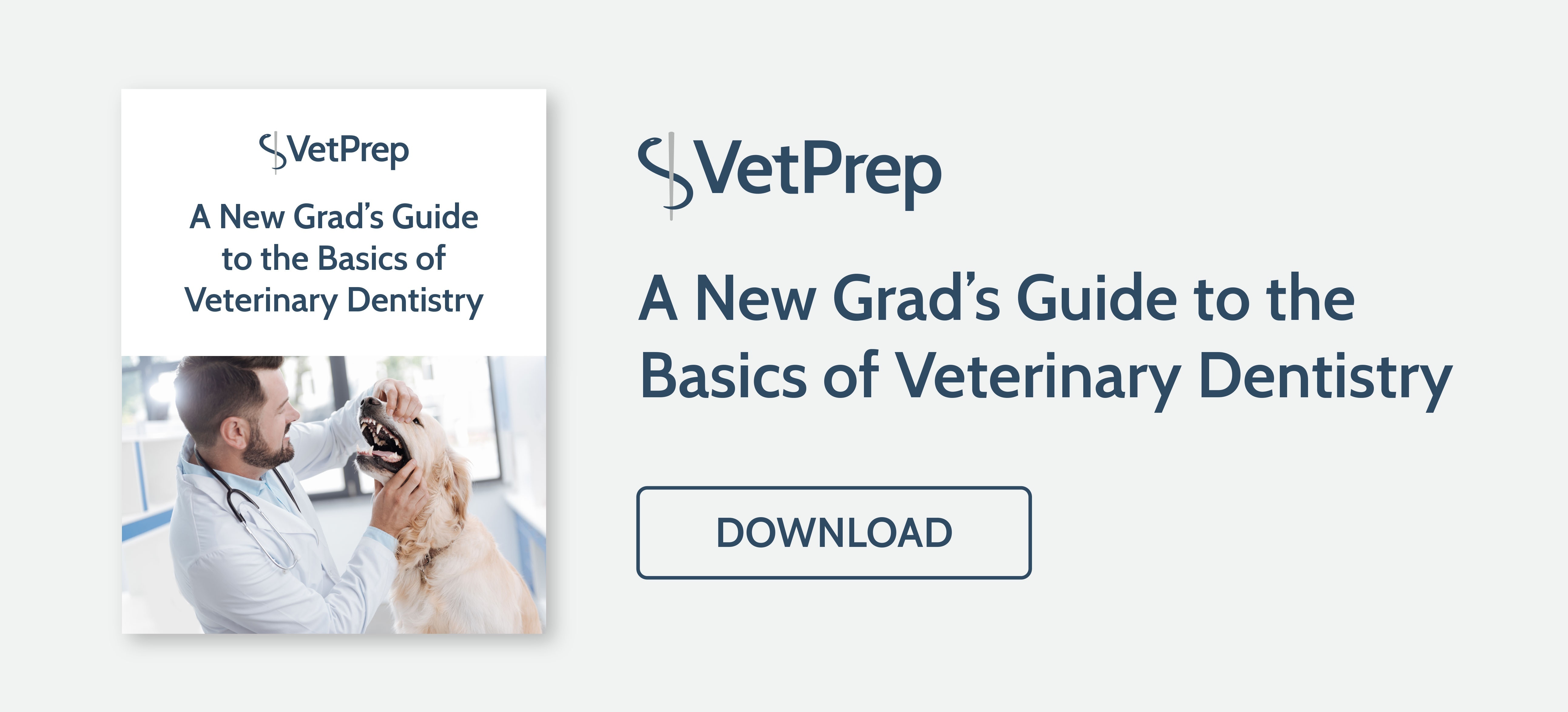
Over the past decade, I feel like I have really heard it all when it comes to objections to dental cleanings for pets.
I have compiled a handful of the most common objections and how to communicate effectively to overcome them…
1) "But Doc, wolves never had their teeth cleaned…."
 Your client may communicate this idea that dental cleanings are not needed in a number of ways. You may hear, “He’s never needed one before” or “is that really necessary?” or even, “wolves never had their teeth cleaned… so Fluffy doesn’t need it either, right?”
Your client may communicate this idea that dental cleanings are not needed in a number of ways. You may hear, “He’s never needed one before” or “is that really necessary?” or even, “wolves never had their teeth cleaned… so Fluffy doesn’t need it either, right?”
Instead of pointing out the fact that Fluffy is a Poodle and is genetically very different from a wolf, there are better ways to overcome this objection such as focusing on the benefits of dentistry.
You can try a variation of the following statement, “Dental cleanings are necessary for our domestic dogs because they reduce periodontal disease, which is the #1 disease affecting our small animal veterinary patients. (8)
Furthermore, periodontal disease can cause the following negative effects:
- Halitosis (bad breath)
- Build up of tartar or calculus
- Mobile teeth
- Oral bleeding (7)
- Systemic disease consequences such as heart disease, kidney disease and liver disease(3)
For all of these reasons and more, dental cleanings are really necessary and will help Fluffy live a better and healthier life.
2. "But doc, I don’t have millions of dollars…."
As much I would like to tell clients- “well, then you’re in luck- dental cleanings never cost millions of dollars,” that probably wouldn’t go over well. A better way to overcome this objection is by stating the facts regarding the costs of dentals and providing clients with options for how to pay for this service.
 You can say something to the effect of “dental cleanings for pets usually cost in the range of hundreds of dollars, possibly up to thousands if multiple extractions are needed. Let’s go over a treatment plan and some payment options so you can decide what may work best for your budget.”
You can say something to the effect of “dental cleanings for pets usually cost in the range of hundreds of dollars, possibly up to thousands if multiple extractions are needed. Let’s go over a treatment plan and some payment options so you can decide what may work best for your budget.”
-
At some clinics, one option is to sign up for a wellness package or plan where clients pay a membership and monthly fee. While the package may not include the cost of everything needed, they usually cover at least the bloodwork, anesthesia and dental prophylaxis itself, which can be a majority of the cost.
-
Alternatively, CareCredit® is a payment option for some clients. This is a third party financing method that gives clients a way to pay for the service on the day it is performed and then make payments to carecredit over time.
-
Lastly, if the pet needs multiple extractions that the client can not afford that day, a staged approach treatment plan can be developed (though is not ideal, it is an option).
3. “But doc, isn’t anesthesia dangerous and can’t we just clean the teeth without it?”
Overcoming this objection has to be done in a two-pronged approach. You can say something to the effect of “I’d like to share some information with your regarding how we do our best to make sure anesthesia is safe as possible for Fluffy and I’d also like to explain why anesthesia-free dentistry is not recommended.”
I try to explain to clients that anesthesia can be safer if we take certain precautions, which is why we recommend pre-anesthetic bloodwork, IV catheter, certain pre-medications and induction agents and close monitoring as part of their dental treatment plan.
I also explain that the anesthetic risk overall is fairly low- in fact, “studies on anesthetic mortality rates in the veterinary profession estimate the anesthetic death rate for healthy patients at approximately 0.1-0.2%.” (4)
To explain why anesthesia-free dentistry is not recommended, I refer to facts such as the following stated by board certified veterinary dentist Dr.Holmstrom and Carol Wedlin, RDH:
“It is not possible to deliver complete and thorough prophylactic dental procedure, or perform periodontal procedures, without general anesthesia: a) patients will not hold still b) risk of operator injury from being bitten is significant c) inability to completely instrument the patient, and d) inability to completely examine the patient.”
They also explain that anesthesia-free dentistry is unsafe for the patient who can get injured by the dental instruments or risk developing aspiration pneumonia from not being intubated during the procedure.(5)
For all of these reasons, I recommend dental procedures for pets under general anesthesia.
4. “But Doc, he gets his teeth brushed at the groomer…. “
As much as I would like to say, “Well if Fluffy doesn’t go to the groomer every day, then it’s extremely unlikely that brushing occasionally is improving his oral health,” but that would not be helpful. So here’s a better response to overcome that objection.
Try explaining that the American Veterinary Dental College states that “frequent (ideally daily) brushing is recommended to maintain optimal dental health.” (6) Additionally, even daily brushing does not necessarily replace the need for a professional dental cleaning.
Conclusion
Even though I think I have it heard it all when it comes to objections regarding veterinary dentistry- maybe I haven’t! Can you think of other common objections to veterinary dentistry and how to effectively handle them? Share them below!
And if you want more information about veterinary dentistry, download our content offer, “New Grad’s Guide to Veterinary Dentistry.”
References:
- Barnette, Cathy. Article. “Anesthesia-Free Dentistry: What’s the Big Deal?”
- Barnette, Cathy. “The Vet Tech’s Ultimate Guide to Communicating about Dentistry.”
- Barnette, Cathy. “Top 3 Consequences of Untreated Dental Disease.”
- Brodbelt, D. 2009. Perioperative mortality in small animal anaesthesia. The Veterinary Journal. 182(2):152-161.
- Frequently Asked Questions by Dentistry Hygienists. Academy of Veterinary Dental Technicians.
- Information for owners. American Veterinary Dental College.
- Home care for dogs. American Veterinary Dental College.
- Niemiec, Brook. “Concepts of Periodontal Disease and Therapy.” Wild West Veterinary Conference 2018 Proceedings.



